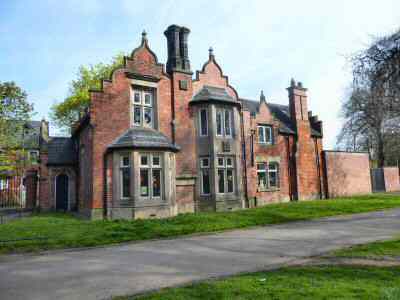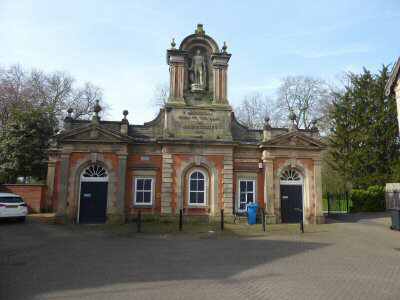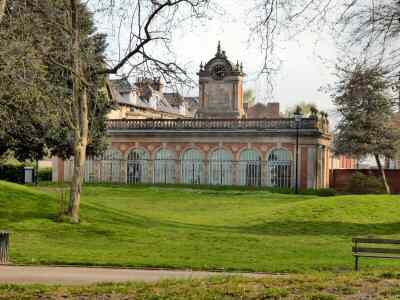ROSE HILL AND ARBORETUM
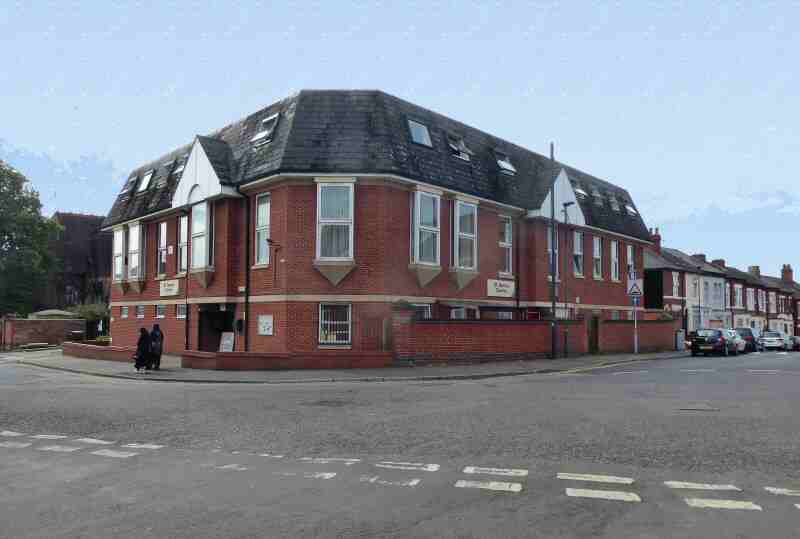
INFORMATION
Where is it? – Rose Hill and Arboretum adjoin Normanton about one mile south of the city centre.
What to do? – Enjoy a visit to the Arboretum which was opened on 16 September 1840 and became England’s first public park. To give the illusion of space it was laid out with banks planted with trees and shrubs to disguise the paths and park boundaries – try a trip to Alter Rock Indoor Climbing Centre, Derby’s leading centre for learning climbing skills and much more; visit Arboretum Square and take a look at the East Pavilion by using the entrance to Arboretum Park.
Where to eat? – There are several pubs and restaurants in Rose Hill and Normanton that provide refreshments. Visit the café in Arboretum Park.
Other places to visit – Head to Osmaston Park and Moorways Sports Village where there is a prestigious Water Park with a 50m swimming pool and other leisure facilities. The adjacent Moorways Stadium provides a home for athletics and other sports – visit Derby Museum and Art Gallery which holds the world’s largest collection of works by Derby’s internationally famous artist, Joseph Wright. There are many other galleries to see and every changing exhibition to enjoy – Derby Cathedral is a superb place to visit with its impressive Perpendicular Tower. The second-highest in England to the Boston Stump. The Cathedral Centre on the opposite side of the road holds some of the Cathedral’s treasures.
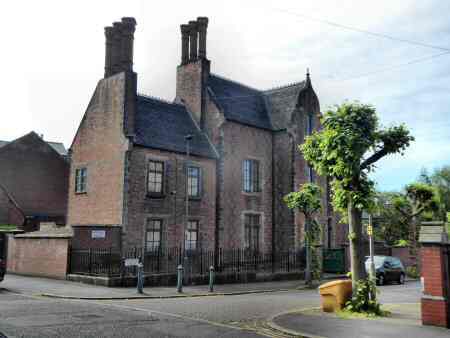
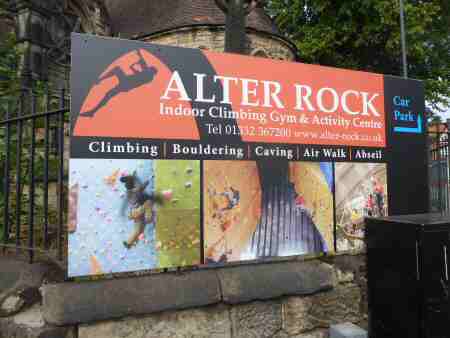
PROFILE
Rose Hill is an inner-city suburb centred on Rose Hill Street. It sits between Normanton Road and Dairy House Road about a mile south of the city centre. The area expanded rapidly in the late 19th century and contains a high density of terraced housing. Derby’s historic Arboretum is located on Rose Hill Street. Nearby is Royal Crown Derby on Osmaston Road.
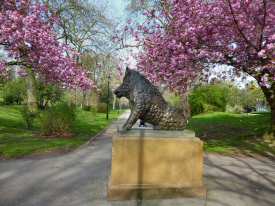
Rose Hill House
The house was probably built in the 1840s when it would have been mainly surrounded by fields. The Arboretum was established in 1839-40 and is situated opposite. By the 1860s the first terraces had been built along the south side of what was now officially called Rose Hill Street. The house was purchased by William Sale, a prominent silk throwster and on his death, the house was passed to his son. He sold it in 1891 to the Rev. Claude H. Parez, the Chief Inspector of Schools for Derby and Wilfred Road was constructed across part of the garden to the house. In the early 20th century, the house was occupied by Dr Charles Edward Potter. He used the former kitchen as a waiting room and extended it to form a consulting room. The house is now designated as a Grade II listed building.
The Arboretum
Joseph Strutt, the third son of the great industrialist Jedediah, donated the Arboretum to the people of Derby. He was a great social reformer. Strutt recognised the fact that the working classes, though better off than their predecessors regarding housing and working conditions, were being deprived of open space. His mission was to provide a “Pleasure Ground or Recreation Ground to offer the inhabitants of the town the opportunity of enjoying, together with their families, exercise and recreation in the fresh air, in public walks and grounds devoted to that purpose.” He commissioned John Claudius Loudon, a renowned writer and garden designer, to draw up the plans. Loudon laid the park out with banks planted with trees and shrubs to disguise the paths, and park boundaries to give the illusion of space. No two species of tree or shrub were the same in the 11-acre park. When the task had been completed by Loudon. Strutt named the park, ‘The Arboretum.’ It was opened on 16 September 1840 and became England’s first public park. A popular attraction in the park was the Florentine Boar. It was a hollow earthenware copy made by William John Coffee from 19th-century drawings of an original bronze fountain. That sits on the edge of the Marketo Nuovo in Florence. Although it was refurbished in 1934, bomb damage during the Second World War caused it to be removed. Following years of decline, funding was obtained from the Heritage Lottery Fund, the Council and other sources, and the Arboretum, together with the boar, were restored to its former glory early in 2007.
St James’ Centre
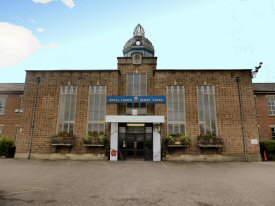
The St James Centre in Malcolm Street is a busy community organisation with charitable status. It regularly attracts over 50,000 visitors per year that are supported by well-trained staff and volunteers. The centre manages and delivers a wide range of innovative community projects and services for people with different backgrounds, needs and interests. It acts as the community base for Derby College, where ESOL, English, Maths and Digital Skills courses are run. Facilities in the form of office space and room hire are also available for hire by statutory and voluntary organisations. A creche and nursery are run from the premises.
Rose Hill Business Centre
The Rose Hill Business Centre on Normanton Road was built in 1992/3 as a joint venture between Derby City Council and the Derbyshire Enterprise Board. The northern building contains the main Reception Facilities and two Conference Rooms,16 Office Units in single rooms or small suites. With 7 small Workshops on the rear ground floor with outside entrances. The southern building has 5 Lock-up Shops on the street frontage with a single Workshop Unit.
Alter Rock
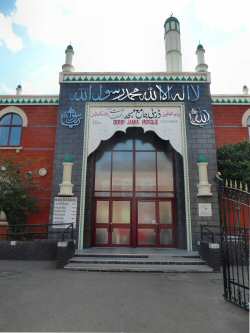
Alter Rock Indoor Climbing Centre at St Thomas’ Church in Malcolm Street is Derby’s leading centre for acquiring climbing skills. It does not matter if you are a beginner or an experienced climber you can join in the fun at this family-owned business. There is over 600 sqm of climbing walls, comprising roped climbing and bouldering for all ages and abilities. Attached to an overhead safety point you can also take on an exciting aerial assault course through the rafters of the church. There is also an indoor cave system to explore.
Royal Crown Derby (Osmaston Road)
Following the coming existence of the Derby Poor Law Union in 1837, the Poor Law Commissioners had the first Derby Union Workhouse built on Osmaston Road. The building of a new Derby Union Workhouse on Uttoxeter Road led to the site on Osmaston Road being put up for sale in 1876. It was purchased by the Royal Crown Derby Company for the establishment of a new factory. The eventual move to the new site on Osmaston Road signalled a period of further growth and diversification. In 1890, Royal acclaim followed when the company was appointed ‘Manufacturers of porcelain to Her Majesty’. Following several changes in ownership, the business remains committed to maintaining the same high standards as previously attained.
Jamia Mosque
The Jamia Mosque is a red brick building with green minarets that forms a towering presence on Rose Hill Street. It serves 70% of the city’s local Muslim population and on special occasions can see 2,000 people enter its doors to celebrate and pray. The mosque has three floors with a prayer hall on everyone and 14 separate rooms throughout the building. It is registered for marriages and also has a mortuary and attendant provision for funerals.
